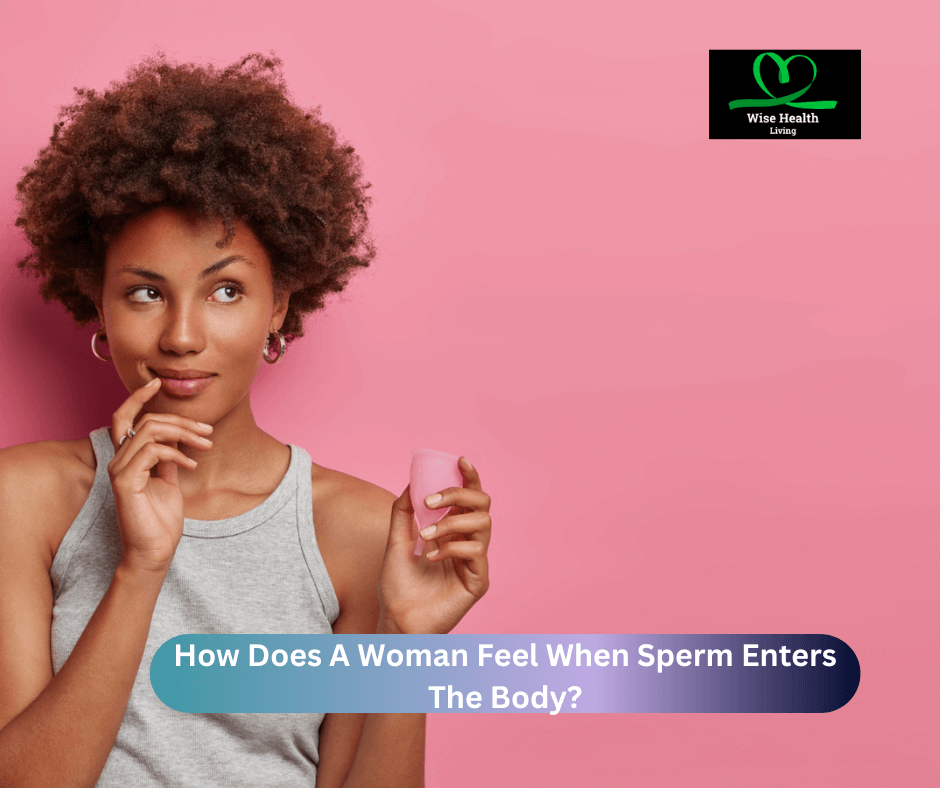“How does a woman feel when sperm enters the body?” That is one question that has to be asked and answered by every woman at one point in time in her life or the other -especially if she has no inclination of becoming a nun or taking a reclusive life.
Sex is one of the facts about life which to many is inevitable. We are nearly always going to have sex at one point in our lives. And society helps us prepare for that whether through discussions or warnings from our parents or older family members; or at school during sex education. Even our peers and older siblings help us prepare for sex in the hearsays and other talks we hear around.
The bottom line, we will nearly all be sexually active women at some point in our lives. And if we are going to be mothers in the future, we had better prepare to understand or feel the answer to the question: “how does a woman feel when sperm enters the body?”
Let us first go to the basics of sex or sexual intercourse and the essence of the sperm in this whole mix.
What is sexual intercourse?
Penetration-based sexual intercourse, especially when a man inserts his erect penis into a woman’s vagina, usually results in orgasm and the ejaculation of sperm.
Scientifically called coitus, sexual intercourse is also known as heterosexual intercourse which involves the penis into the vagina.
Sex further refers to intercourse that does not involve penetration of the vagina by the penis, but involves the mouth being used to stimulate the genitals (oral) or the penis or hands used to stimulate the anus (anal).
The hands also come into play in stimulating the genitals during sex (popularly known as a hand job when given by another or masturbation when done by one’s self).
Then there is the use of sex toys like vibrators and all the other things related to it.
Reasons why people have sex
There are various reasons why people have sex, but whatever the reason, it is either for reproduction or for pleasure.
For the purpose of reproduction, humans need to procreate and doing that involves a male and a female having sexual intercourse; the man ejaculating into the woman’s vagina and conceiving and getting pregnant. The end game here is to produce offspring we refer to as children, creating another generation that will fill the earth after us.
Sexual intercourse is also performed between people just for physical or emotional gratification, that is pleasure and enjoyment.
Sexual intercourse also helps strengthen the bonds between people and is best when there is a consensual agreement between the people involved.
Looking at this, we can now understand what sex is all about and why a woman would want to be intertwined in it. Let us now gravitate to knowing what sperm is and its role in sex.
Recommended – How To Use Garlic To Tighten The Vagina
What is sperm?
The male gamete, or reproductive cell, in anisogamous modes of sexual reproduction, is the sperm (forms in which there is a larger, female reproductive cell and a smaller, male one). Spermatozoa, or mobile sperm with a flagellum tail, are produced by animals.
The Greek word sperma, which means “seed,” is where the term “sperm” comes from. Sperm cells cannot divide and have a short lifespan, but when they combine with egg cells to form a zygote during fertilisation, a new organism begins to emerge.
The importance of sperm to reproduction
The sperm’s job is to fertilise the egg so that an embryo can be created. The sperm is transported to the egg by the fluid produced by the male sex organs.
The female cannot conceive a pregnancy that will develop into a kid without the sperm. So, if there is no sperm, there cannot be fertilisation, let alone childbirth.
What is the sperm made up of?
The sperm is made up of vitamin C, B12, ascorbic acid, calcium, citric acid, fructose, lactic acid, magnesium, zinc, potassium, salt, fat, and hundreds of different proteins.
If the true nutritional components—all the lipids, proteins, and carbohydrates—are considered, 34 teaspoons of semen could only provide a few calories of nourishment.
On the other hand, the bulk of semen is merely water and contains very little true nutrition. About one teaspoon’s worth of semen is typically released with an ejaculation of 1.5 to 5 millilitres. Nonetheless, this substance is powerful; a millilitre of semen typically contains between 20 and 150 million sperm.
Structure of the sperm
A head and a tail are the two easily identifiable components of mature sperm. Each animal species’ sperm head has a unique form. The sperm in humans is flattened and almond-shaped, reaching up to four or five micrometres in length and two to three micrometres in width (using 25,000 micrometres for an inch).
The head section is mostly a cell nucleus; it contains genetic components called chromosomes that are in charge of passing down unique traits of an individual, such as eye, hair, and skin colour. Healthy people have 46 chromosomes, which are in charge of the person’s overall physical makeup, in each of their bodily cells.
The mitochondria are located in the sperm’s tiny middle region. The sperm’s tail, also known as the flagellum, is a thin, hair-like bundle of filaments that attaches to the head and central part of the sperm. The tail is roughly 50 micrometres long, and its thickness gradually decreases from one micrometre near the mitochondria to less than half a micrometre at the end.
How does sperm affect the reproduction process?
A new child is created when the sperm fertilises the female’s ovum (egg). The acrosome, a cap that protects the sperm’s head and houses enzymes that facilitate sperm entry into an egg, covers the sperm’s head.
Despite the fact that an average ejaculation contains 300,000,000–400,000,000 sperm, only one sperm cell fertilises each egg. The tiny variations in genetic material carried by each egg and sperm generated account for the variances and similarities among offspring of the same parents.
When the sperm is introduced into the vagina, the sperm whirls and wiggles, moving towards an egg. Upon reaching the egg, enzymes contained within the sperm acrosome are activated, which will make the sperm pierce through the thick coat surrounding the egg. This process is called the acrosome reaction. All this is included in the fertilisation process.
The membrane of the sperm cell then joins to the egg; pushing in the nucleus in the sperm. Other sperm cells that are ejaculated get to die after three days if they do not get fused with an egg.
Once the sperm encounters, penetrates and fertilises the ovum, it creates a zygote. The gestation of the foetus then occurs within the uterus.The zygote stage, which lasts only a few hours, is followed by the embryonic stage, which lasts for about eight weeks and is characterised by the development of the major organs, and finally, the foetal stage, which focuses on the formation of bone cells while the foetus continues to increase in size.
The mother supplies the foetus with all of its nourishment and oxygenated blood while it grows and divides via mitosis inside the uterus. The placenta, which is connected to the abdomen of the foetus by an umbilical cord, filters the nutrients and oxygenated blood.
The mother, who must consume somewhat more calories due to this nutritional depletion, may find it rather tiring.
Also, several vitamins and other nutrients must be consumed in higher amounts than usual, which frequently results in irregular eating patterns. In humans, the gestational period lasts roughly 266 days.
After this stage, there comes the time of Labour and birth. During labour, the female enters the first stage which is called the latent phase and active phase. These phases are separated by the dilation of the cervix for 6 to 10 cm.
Then comes the time when the woman has to push. This is called the pushing stage. The placenta is delivered during the third stage. The uterus’s contraction is the last phase.
As the foetus is fully formed, chemical cues trigger the birth process, which starts with the foetus being pushed out of the birth canal.
Humans refer to newborns as infants, and soon after delivery, the baby should normally start breathing on its own. The placenta eventually separates from the uterus on its own not long after. The umbilical lead may also be severed by the person aiding with the birth.
It is worth noting that all these from the start to the birth of the baby cannot happen if the sperm is not introduced to the vaginal canal during sexual intercourse. This is what makes the sperm so important.
Exciting Read – Can Postinor 2 Flush Out Sperm?
How does a woman feel when sperm enters the body?
There are diverse views on the question of “how does a woman feel when sperm enters the body?” Many women have given their answers to what they feel when their partner ejaculates sperm into their bodies. Some get to feel the sperm as it pours in, and others do not feel anything at all.
Let us take a peek into what some people have felt:
One lady opined that whenever sperm enters her, it fills her up. She feels full inside her vagina for the next 24 hours. She also claimed that it makes her feel sleepy and relaxed.
One woman said that she develops a type of unexplainable itching inside her when her partner gets to ejaculate his sperm into her. In response to that some have come forth to say that the itching phenomena in this regard point to the fact that the person may have been infected with an STI that may include Syphilis.
Another woman claimed that she feels nothing. She thinks it is weird considering the fact that many others do not share this feeling.
Some other women state that they feel relaxed and get to feel the warmth of the sperm as it comes into their vagina.
How to know that there is sperm inside your body
There are certain things that point to the fact that there is sperm inside your body as a woman. You would know if
1. You have sperm leaking out of your body.
Having sperm come out of your body after sex can show that your partner has deposited some inside of you. The extra semen that hasn’t entered the cervix is most likely what is leaking out.
2. Morning sickness
Having morning sickness (nausea and vomiting) may mean two things, you have not only got sperm inside of you, but you are pregnant. This happens between 8 to 10 days after you must have had sex.
3. Delayed periods.
There you have it. It is most likely that you are pregnant if you do have a delayed period. You have sperm doing its work inside of you. It also could mean some hormonal change or imbalance.
4. You find out that you are pregnant
That shows without a doubt that you have got sperm inside of you and it is no longer just sperm, but a growing baby inside of you.
5. Fatigue
When the sperm begins to act. You will feel tired, sometimes drowsy and sleepy. You have got some sperm inside your body. You could also experience nausea, headaches and vomiting.
In conclusion
Having sperm inside you may give off some types of feeling depending on how your body system works or whether or not you enjoy having or want to have something inside you. For those who do not want to have the sperm inside them, they could take emergency contraceptives like Postinor to flush it out or use spermicides during sex.



